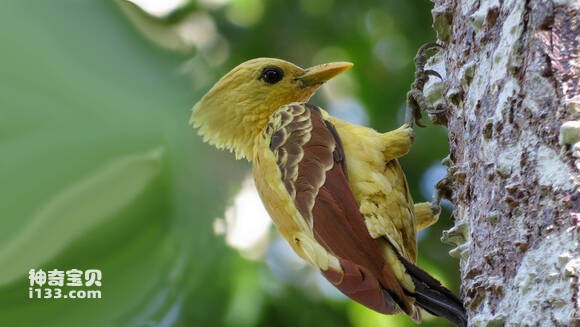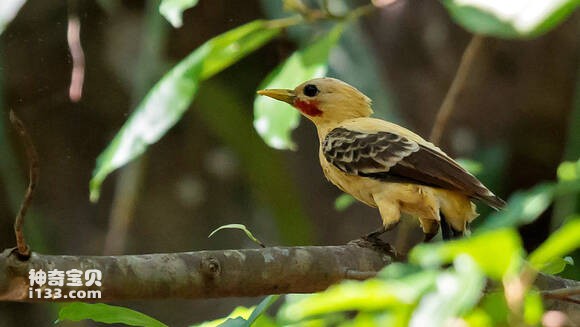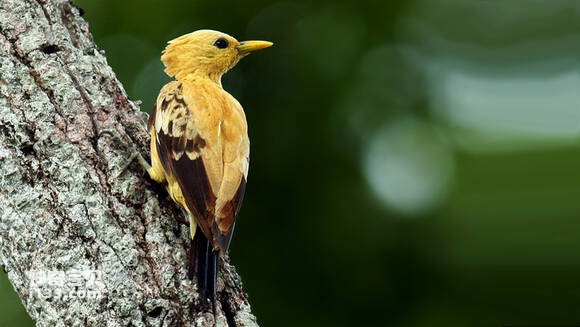Celeus flavus
IUCN
LCBasic Information
Scientific classification
- name:Celeus flavus
- Scientific Name:Celeus flavus,Cream-colored woodpecker
- Outline:Climbing birds
- Family:
Vital signs
- length:About 26 cm
- Weight:95-130g
- lifetime:No textual research information is available
Feature
Distribution and Habitat
It is mainly distributed in Suriname, Brazil, Guyana, Colombia, Bolivia, Peru, Chile, Argentina and other countries.
The milk-white woodpecker inhabits swamp forests, wetlands and woodland edges, forest belts, mangroves, and is found in Varzea (near river forests, submerged for several months of the year). It also lives in other types of habitats, as found on cocoa plantations. Vertical habitat elevation from the plain to a height of about 400-700 meters.
Appearance
The milky woodpecker is 26 cm long and weighs 95-130 grams. Male birds have crested feathers that range in color from pale yellow to beige to yellow. There are some brown feathers on the head and back. The color of the wings changes. Underbody is pale yellow, cream color. The underside is light yellow cream and more brown. The feathers are black, some with large patches of brown. The coverts are pale yellow or cream, while the upper coverts on the tail are dark brown and the rump is pale yellow or cream. Except for the light brown wings and tail feathers, the whole body is golden, and the male and female are distinguished by the bright red underside of the cheek.
The mouth is as stiff as a chisel; The tongue is long and flexible, often four to five times longer than the mouth, and is used to search for insects and other larvae that cause disease in trees. Apex with short hook; Feet slightly shorter, 4-toed, 2 toes forward, 2 toes backward; The tail is flat or wedge-shaped, and the t
Details
The species, known as Celeus flavus and Cream-colored woodpecker, has four subspecies.

Milk-white woodpeckers are found near rivers; Living alone, most woodpeckers can only cling to a tree trunk with four toes, while the milky woodpecker can perch on a branch like a passerine bird. Woodpeckers can chisel hookworms out of trees. Their mouth is long, sharp and hard, and they can stick it all the way into the hard xyloid. Their tongue is long and thin, with many barbs and a layer of slime on the surface, and they can hook the pests out accurately. Food is mainly termites, grubs and other insects, but also eat seeds, fruits and so on.

White woodpecker mating between August and November every year, a male with a female, courtship during the male bird to change the usual silent style, with the beak hard on the empty tree trunk or metal to "tell the heart of love", so as to attract the attention of female birds. The loud hammering of woodpeckers echoes through the spring woods, like the sound of pneumatic diggers, announcing the beginning of mating season. To attract a mate, woodpeckers choose a piece of dead wood, or any object that resonates, and tap it quickly and forcefully with their beak.

When woodpeckers mate, they start digging holes for nests. The choice of site depends on the size and strength of the beak. The stronger birds choose very hard trees. Small and weak woodpeckers often take a labor-saving approach to building their nests in soft, decaying wood. Once the hole is dug, and sometimes covered with a layer of wood, the mother bird lays white eggs on it, which are almost round. Both parents nest together to raise chicks, the incubation period, feeding period, sexual maturity period and life span of chicks are unknown.
Listed on the International Union for Conservation of Nature (IUCN) 2013 Red List of Threatened Species ver 3.1 - Low Risk (LC).
Protect wild animals and eliminate wild meat.
Maintaining ecological balance is everyone's responsibility!








